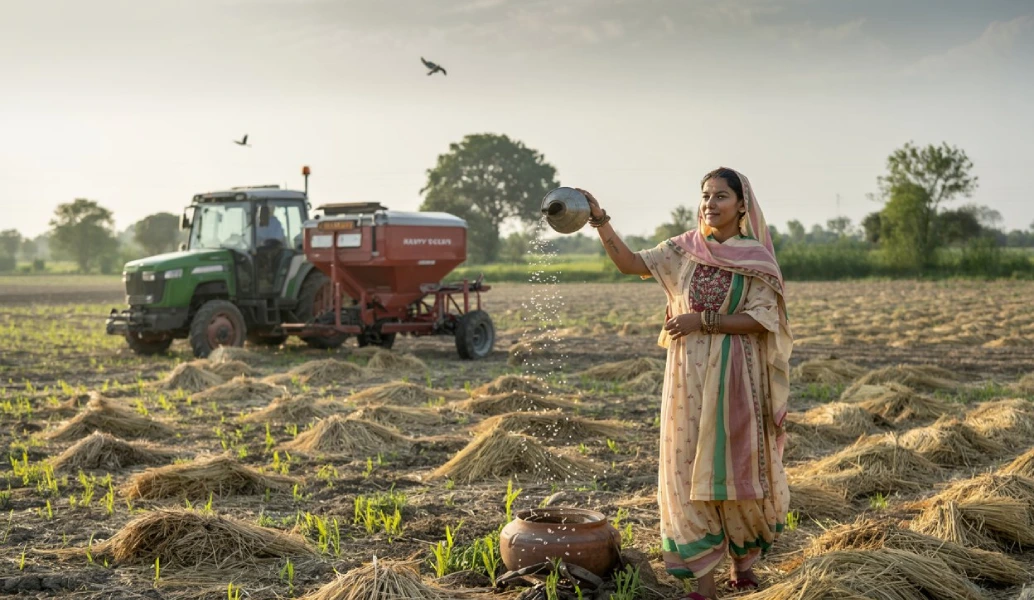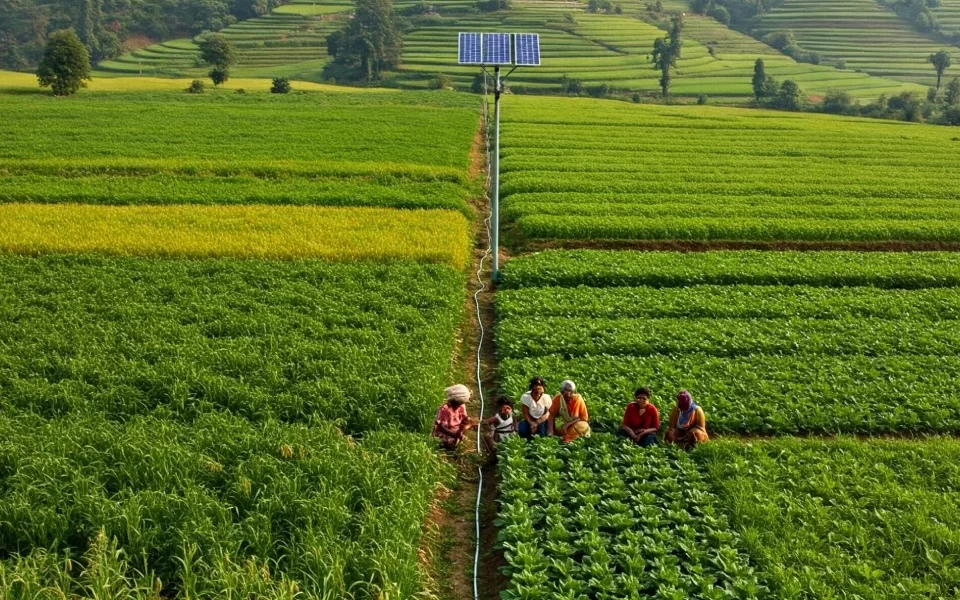
Harnessing Genetic Engineering for Enhanced Plant Virus Resistance
April 22, 2025No-Burn Agriculture: A Climate-Smart Strategy for Lower Emissions, Heat-Stress Resilient Fields and Stronger Crops
Harleen Kaur*: Technical Expert (Entomologist) in Project PRANA (The Nature Conservancy) under Manav Vikas Sansthan | MSc Entomology, Punjab Agricultural University, Ludhiana, Punjab
Manpreet Kaur: PhD Research Scholar, Department of Botany, Punjab Agricultural University, Ludhiana, Punjab
*Corresponding author email : hleenkaur1998@gmail.comAgricultural residue burning remains a significant contributor to air pollution, carbon emissions, and soil degradation in India. With the increasing impact of climate change and extreme weather, finding sustainable solutions is critical. Paddy stubble management using happy seeder, super seeder, surface seeding and smart seeder, promoted through The Nature Conservancy’s Project PRANA (Promoting Regenerative and No-burn Agriculture) and its collaboration with the NGO Manav Vikas Sansthan , is emerging as a scientifically backed strategy to mitigate these challenges. By retaining crop residue as mulch, farmers can reduce emissions, lower heat stress, and improve soil structure, ultimately strengthening crop resilience.
- Lower Carbon Emissions & Improved Air Quality
Stubble burning in India releases 149 million tons of CO₂ annually, contributing to global warming and hazardous air pollution. The adoption of no-burn techniques offers a dual benefit—reducing emissions and improving air quality.
Prevention of Carbon Loss: Retaining crop residue keeps organic carbon in the soil instead of releasing it into the atmosphere.
Reduction in Fine Particulate Matter (PM2.5 & PM10): Eliminating field fires decreases air pollution, benefiting Punjab, Haryana, Delhi, and even regions beyond.
Health & Environmental Gains: Cleaner air leads to lower respiratory diseases and improved ecosystem balance, protecting both human and agricultural health.
- Cooling the Fields: Reducing Heat Stress in Crops
Climate change is intensifying heatwaves and erratic temperature spikes, threatening crop productivity. Bare soil absorbs and retains excess heat, increasing heat stress in plants. Mulching-based residue retention provides a natural solution.
Soil Temperature Regulation: Residue mulch acts as an insulating layer as well as albedo reflecting layer preventing excessive heating during the day and reducing rapid cooling at night.
Improved Heat Tolerance: Stabilized soil temperatures help crops maintain metabolic balance, reducing the risk of heat-induced wilting and drought stress.
Enhanced Moisture Retention: Mulch reduces evaporation rates, ensuring that water remains available for plant uptake, even during dry spells.
- Carbon Sequestration: A Climate Solution Below Ground
Soil is one of the largest carbon sinks on Earth, but continuous tillage and burning deplete its organic carbon content. No-burn practices reverse this trend by actively sequestering carbon back into the soil.
Increased Organic Matter: Decomposing crop residue adds carbon-rich compounds to the soil, enhancing soil fertility and structure.
Microbial Activity Boost: Beneficial microbes break down organic material into stable humus, further improving soil resilience and water-holding capacity.
Stronger Plant Growth: Higher carbon content supports healthier root systems, leading to better nutrient absorption and improved stress tolerance.
- Strengthening Root Anchorage & Preventing Lodging
A plant’s ability to remain upright—especially during strong winds, heavy rains, and extreme weather events—is directly linked to root anchorage. Lodging (falling over) significantly reduces crop yield and quality, making strong root systems essential.
Preventing Soil Compaction: No-burn techniques maintain soil porosity, allowing roots to penetrate deeper and spread wider.
Encouraging Beneficial Microbial Interactions: Root-associated microbes enhance root adhesion to soil particles, increasing anchorage strength.
Reducing Erosion Risks: Stable soil conditions protect root zones, ensuring that crops remain secure even during storms or high winds.
Maintaining soil integrity through mulching-based residue management helps crops resist lodging, particularly under Western Disturbances and unseasonal storms.
- Enhancing Root Length & Soil Penetration
Healthy root systems are fundamental to nutrient and water uptake, directly influencing crop growth, yield, and resilience. Residue retention techniques promote root elongation and deeper soil penetration.
Consistent Soil Moisture: Mulch maintains optimal hydration levels, encouraging uninterrupted root growth.
Improved Soil Structure: Organic matter loosens compacted soil, allowing roots to penetrate deeper without resistance.
Higher Drought Tolerance: Longer root systems access deeper water reserves, making crops more resilient to Punjab’s changing climate.
Deep-rooted crops have greater access to nutrients, leading to higher yields and improved resistance to environmental stressors.
The Way Forward
Project PRANA, working in six districts namely Ludhiana, Malerkotla, Moga, Jalandhar, Patiala and Fatehgarh Sahib in collaboration with Manav Vikas Sansthan, is proving that no-burn techniques are not just an alternative—but a necessity for climate-smart agriculture. By cutting emissions, cooling fields, improving soil health, and strengthening plant resilience, these practices are paving the way for a more sustainable and productive agricultural future.





